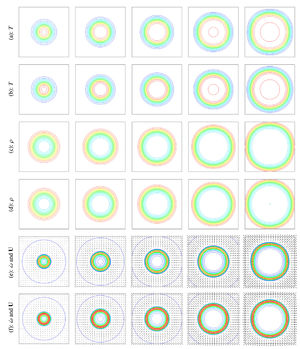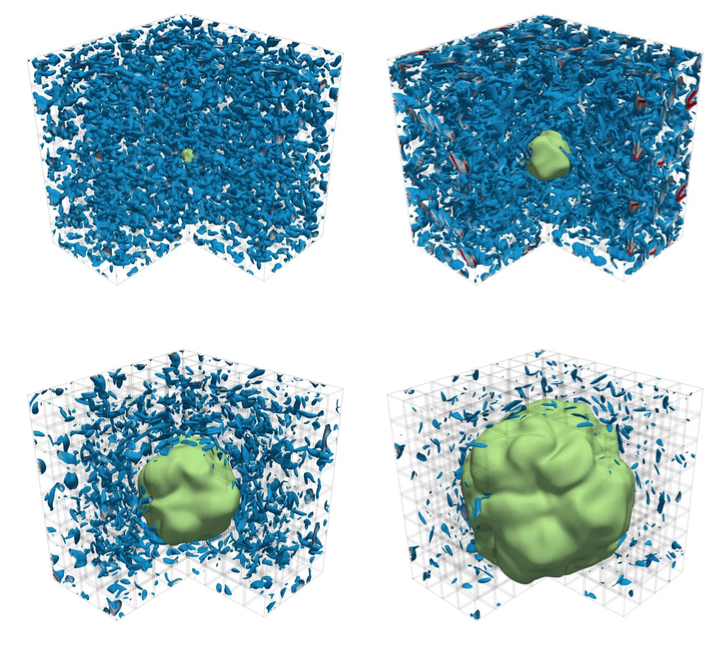Difference between revisions of "H-Allegro Gallery"
| Line 10: | Line 10: | ||
{| class="wikitable" | {| class="wikitable" | ||
|+ TOM strategy compared to 3D-NSCBC & NSCBC | |+ TOM strategy compared to 3D-NSCBC & NSCBC | ||
| − | |[[File:3DNSCBCTOM2.jpg| | + | |[[File:3DNSCBCTOM2.jpg|300 px]]] |
|} | |} | ||
Revision as of 16:29, 21 March 2016
3D NSCBC modeling for transverse and corner outflows
The limitations of usual three dimensional Navier–Stokes Characteristic Boundary Conditions (3D-NSCBC) for flows traveling in a direction that is oblique to the boundary may induce flow deformation at the vicinity of the outflow/ To limit errors generated at boundaries with flows having any arbitrary direction, we propose to organize the wave decomposition in a coordinate system that is attached to the local flow streamline crossing the boundary, because some modeled expressions are not frame independent. Compared to previous 3D-NSCBC, the modified strategy accounting for oblique waves is found to improve the outflow treatment for transverse outgoing vortices, up to vortices crossing an outflow corner. The method is also applied to an expanding laminar flame.
 ] ]
|
- E. Albin, Y. D'Angelo & L. Vervisch, Flow streamline based Navier-Stokes Characteristic Boundary Conditions: modeling for transverse and corner outflows, Computers and Fluids, 51, 1, pp. 115-126, 2012 http://dx.doi.org/10.1016/j.compfluid.2011.08.005
- E. Albin, Y. D'Angelo & L. Vervisch, Using staggered grids with acoustic boundary conditions when solving compressible reactive Navier-Stokes equations, International Journal for Numerical Methods in Fluids, 2012 http://dx.doi.org/10.1002/fld.2520
Direct simulation of propagating flames: 3D expanding or converging front

|